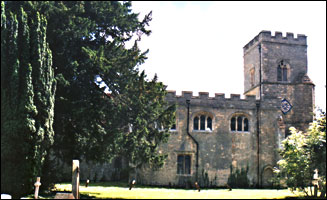![]()
The contents on this page remain on our website for informational purposes only.
Content on this page will not be reviewed or updated.
 |
|
 |
|
|
||
|
A.R.P. & Air Raid Precautions
|
||
|
||
Whereas in fact in the wake of tragic road fatalities often, as at Bletchley, trials were made of ‘star lighting,’ whereby low wattage bulbs were used for street illumination. Another old chestnut - although I suppose it makes good ‘copy’ - is that the many stray bombs dropped in this region might have been intended for railway works, Bletchley Park, or, as at Battlesden, for clandestine headquarters. Rubbish. Had the Germans been aware, they would hardly have sent over just a stray bomber or two! During the early months of the war, targets about which the enemy knew received an obvious attention, and raids on Cranfield aerodrome caused ‘collateral’ damage on the parish churches of Astwood, Cranfield and probably Newport Pagnell, where a bomb wrought damage that would not be repaired until many months after the war. As for New Bradwell, in the wake of tragic deaths it was understandable that people began to take the blackout regulations seriously, and no one more so than the local Reverend. At his Vicarage were billeted an elderly Jewish tailor and his wife, and since they had been less than diligent in keeping the door shut, and thereby allowing light to shine onto the church, the Reverend had received several warnings from the Air Raid Wardens. Then matters came to a head when he was fined at Stony Stratford Police Court for assaulting the couple, with his defence being that the door had struck the tailor when he had to forcibly close it. Incidentally, did I really read in some local news article that regarding New Bradwell ‘little has changed’ since that time. So I suppose the demolition of most of the railway terraced housing, with the advent of the New City, is of minor significance! But back to air raid precautions, and the need for such measures was dramatically proved in 1940 at Soulbury, when, becoming inquisitive about a marauding German bomber, a resident drew back the blackout curtains. The light immediately attracted a direct hit, and fortunately although the house was completely destroyed no one was killed. Another bomb, plus incendiaries, landed in a nearby field, and although subsequent reports would suggest that the device had been dealt with by a Canadian unit, who were stationed in the area, there seemed considerable doubt at the time. Then after the war the suspicions were vindicated, when in 1946 a 500 pounder, fitted with two clockwork fuses, was found near Clay Hill farm, only 60 yards from three cottages. No. 22 Bomb Disposal Group were called in to effect the detonation, and with the cottages protected by a wall of sandbags ‘Not even a window was broken.’ However, parts of the wooden shafting were later found over 200 yards away! Yet in January 1941 there had been no doubt about another bomb, which killed a girl at Heath and Reach. In fact incredibly the village had also been the target of enemy action during World War One, when, having no idea of his whereabouts, on seeing a village below him the commander of a Zeppelin dropped eleven bombs. Fortunately, due to the altitude the aiming was inaccurate, and even before the preliminary flare had descended there were 11 explosions in quick succession, in open countryside along a line of about a mile in length between Overend Green Farm and Shenley Hill Road. Bomb fragments fell in the main street of the village, but the only damage caused was a few shattered window panes. In the morning it was then found that the bombs had made craters 7 feet deep and 10 feet wide, but the only fatality had been a rabbit. Somewhat ironic, for a creature that spends much of its time in an underground shelter. |
||
|
|
||
|
|
||


